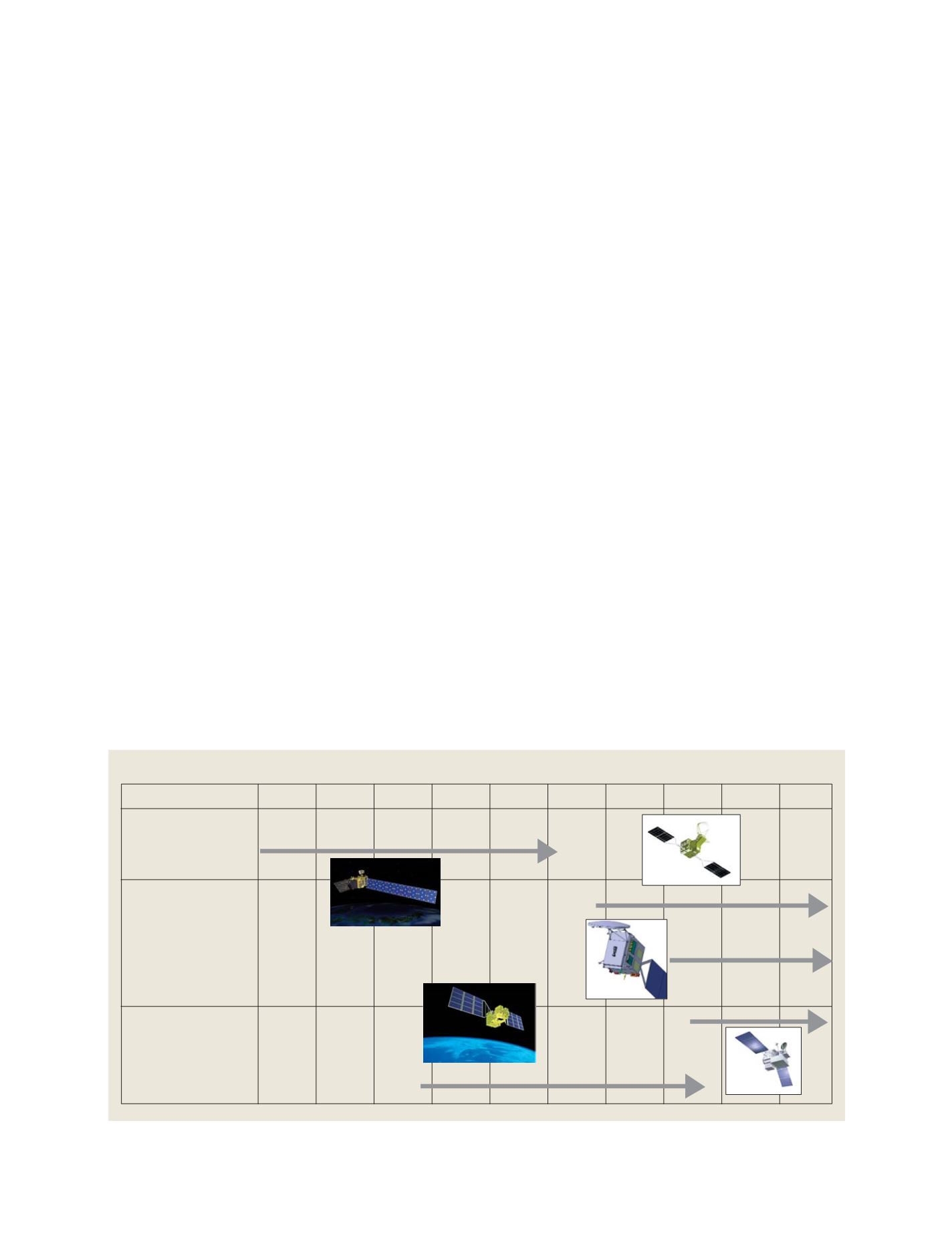

[
] 41
the observing system of the climate variability should be stable, and
should cover long-term period and entire Earth. GCOM is to be
designed to have two polar orbiting satellite series and multiple
generations to respond to the necessity.
GCOM is also expected to cooperate with the US National Polar-
orbiting Operational Environmental Satellite System (NPOESS) to
realize an integrated Earth observation system in the GEOSS context.
EarthCARE
The Earth Clouds, Aerosol and Radiation Explorer (EarthCARE)
mission is a joint project of European Space Agency (ESA) and JAXA
to measure the three dimensions structure of clouds and aerosol
distribution with a combination of cloud radar and lidar in order to
improve the predictability of global warming.
JAXA and Japanese National Institute of Information and
Communications Technology (NICT) develop the space-borne cloud
profiling radar (CPR) jointly for this mission.
GPM
Global Precipitation Measurement (GPM) is a follow-on and
expanded mission of the current ongoing Tropical Rainfall
Measuring Mission (TRMM). GPM is one of the Earth observation
satellite programmes, mainly initiated by JAXA, the National
Institute of Information and Communications Technology (NICT)
and the National Aeronautics and Space Administration (NASA).
In addition to the core satellite, a sub-satellite constellation compris-
ing around eight satellites will be launched by NASA, the European
Space Agency (ESA) and other space organizations across the world.
The microwave scanning radiometers aboard these eight polar orbit
satellites collect and process data, making it possible to obtain global
rainfall distribution every three hours. GPM plans to transmit this
global rainfall distribution data in real time, so it can be used not only
for scientific research, but also in social disciplines such as weather
forecasting, flood prediction or water resource management.
Based on the anticipated success of GPM in realiz-
ing these objectives, a recent study has recommended
that an operational programme of satellite-based
global precipitation measurements be developed after
GPM ends.
1
The Integrated Global Water Cycle
Observing scheme (IGWCO) strongly supports GPM.
The GEOSS Ten-Year Implementation Plan Reference
Document contains a target to facilitate the develop-
ment of effective sensors and missions for precipitation
(GPM), and the GEO 2006 Work Plan task (AR-06-10)
endorses the timely implementation of GPM and
encourages more nations to contribute to the GPM
constellation.
The future
Although great things are expected of the GPM
programme, there remains an enormous challenge given
the need to sustain precipitation observations globally
and continuously at high resolution. GPM is scheduled
to operate in the period from 2013 to at least 2016. The
CEOS Precipitation Constellation will explore how the
observation programmes of all space agencies with an
active interest in precipitation monitoring might be
better combined, adapted, modified or harmonised to
provide a continuous record – including before 2013
and beyond 2016. The concept of the ‘CEOS
Constellations for GEO’ has been proposed as the basis
for a process aimed at addressing shortcomings in the
international planning process for space-based Earth
observations without eroding the independence of indi-
vidual agencies. The Precipitation Constellation will
seek to apply this principle to secure a sustained supply
of information on precipitation – of potentially huge
societal significance.
Reduction and prevention
of Disasters
Climate change including
Water Cycle Variation
Global Warming and
Carbon Cycle Change
JAXA’s Earth Observation Satellites
2006
2007
2008
2009
2010
2011
2012
2013
2014
2015
Advanced Land Observing Satellite (ALOS)
Greenhouse Gases Observing Satellite (GOSAT)
Global Change Observation Mission (GCOM)
Global Precipitation
Measurement (GPM)
Earth Clouds, Aerosol and
Radiation Explorer (EarthCARE)
Credit: Copyright JAXA
N
ATIONAL
& R
EGIONAL
R
EPORTS
















